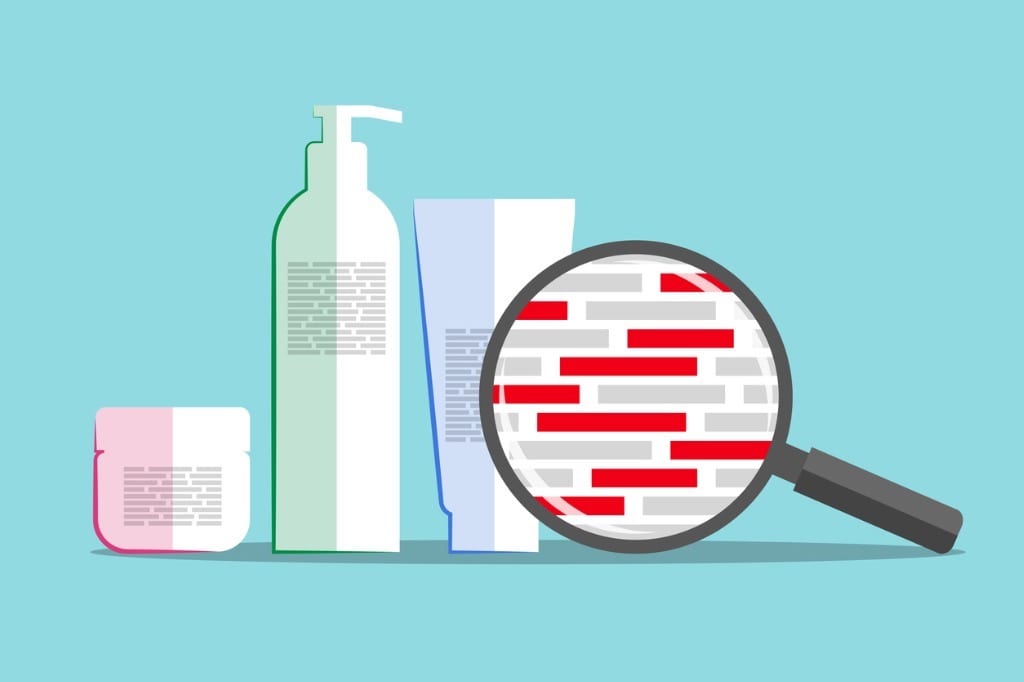A few months ago I was asked to comment on a story in Swaay Magazine about using menstrual blood for research on women’s health. Intrigued, I hopped onto PubMed to learn more. I was surprised to learn that research using menstrual blood, particularly as a source of somatic stem cells, has been going on for years.
The Swaay story was focused on entrepreneur Anna Villarreal and her Boston-based biotech start-up, LifeStory Health, that is developing technology that uses menstrual blood to look for novel biomarkers of women’s health in the menstrual blood proteome.
The benefits of this approach are that menstrual blood is unique to women of child-bearing ages who have historically been understudied in healthcare clinical trials and it is readily available without having to have someone go to a lab to get blood drawn. In fact, for eons, this potentially valuable source of biologic information has been flushed down the toilet or tossed into the trash.
After the article was published, Anna and I connected by phone and over the course of the next few months decided to collaborate in order to bring TDWI readers a fresh perspective on women’s health. To kick off our collaboration, let me introduce you to Anna by way of this post.
Q: Anna, tell me about yourself and how your background and experience led you to found LifeStory Health.
A: I am from Austin, Texas and went to Baylor University where I played soccer for the Baylor Bears. I graduated in 2007 with a Bachelor’s Degree from the School of Arts and Sciences. After graduation, I dabbled in entrepreneurship, started my first company, and went to law school. It was during my final year of law school that I started experiencing health issues.
As a 26-year-old woman, I was dismissed by doctors and told that the stress of life was the underlying cause of my symptoms. Not one to give up, I met with several other specialists across the country for an accurate diagnosis. The medical process should not have been so difficult.
I wondered if there had been a way to test menstrual blood, could it better address my symptoms and could my situation have been prevented or at least better managed? This experience was the catalyst for LifeStory Health (LSH).
Law school empowered me to be a voice for women and certainly taught me how to research. What I discovered was a huge gap in women’s healthcare, most specifically in the lack of sex-specific research. I have met with thousands of women over the past few years and we all want and need the same thing—improved patient outcomes.
Of the hundreds of women who donated their menstrual blood samples, each came with a story similar to mine—health concerns that physicians misdiagnosed or outright dismissed.
You would be shocked at the number of women that have a story, their own LifeStory (hence, the Company name). I remember coming up with the name at Kerbey Lane Cafe, one of my favorite breakfast restaurants in what I still consider my hometown of Austin, Texas, despite moving to Boston nearly five years ago.
Q: Tell us about the company.
A: LifeStory Health is a bioscience company leading a pioneering journey into the previously undiscovered territory of female biology, early pre-determination, and detection of disease, and potential disease management through effective diagnostic and subsequent therapeutic targets.
Everything we do is aimed at discovering novel diagnostics and therapeutic targets and/or partner therapeutics to advance women’s health. With seasoned bioscience and medical leaders involved since inception, our initial focus is on pre-diseases and broad biomarker discovery.
Q. What is your vision for LifeStory Health?
A: LifeStory Health will change women’s healthcare. To help describe where I believe LSH will go, I always encourage my audience to imagine a series of scenarios:
- Imagine a developed country where diagnostics and treatments for female-prevalent diseases are based on women’s biology.
- Imagine a scientific process that has discovered and filed patents for a technology that stratifies and then labels proteins in menstruating women that signal pre- and early-stage disease.
- Imagine better treatment outcomes as a result of this new approach compared to the current ones that are based on male biology.
- Imagine a discovery that enables doctors to perform precision medicine that can categorize female patients by their own unique biology, and when paired with a therapeutic, can increase the effectiveness and specificity of treatment.
- Imagine a non-invasive diagnostic test focused exclusively on the female population, and capable of detecting early-stage diseases prevalent in that population leading to vastly improved patient outcomes.
I believe this reality is within reach.
Q: You have stated many times that the scientific community has deemed menstrual blood as medical waste. What inspired you to see it differently?
A: LifeStory Health is personal. The exciting, groundbreaking research is possible because of a serendipitous interplay of three elements sparked from a personal health battle.
First, I wanted to know why medical professionals wouldn’t or couldn’t use menstrual blood for improved disease detection and management. This led me to the second element, a larger exploration as to why such a wide gap exists in women’s healthcare, particularly clinical research involving female subjects when more targeted data could provide improved disease detection and management for women.
After realizing this unmet need, LifeStory Health was born. The third element to align was my steadfast approach to “letting the data lead”. Our data has led to evidence no one could have dreamed—using menstrual blood, we found a biological marker unique in women. This provides an opportunity to monitor women at the pre-disease stage and/or to reduce the progression of advanced diseases.
Q: How is the blood sample collected?
A: The initial building blocks of the company stemmed from focus groups held across the United States. Over a nine-month period, I gathered more than 450 women to test the usability of our collection process. We use a dried blood spot technology to collect the sample.
The device is FDA-approved for the mail which is how it makes its way to the lab. The lab reconstitutes the sample, and from there we follow LifeStory Health’s award-winning, robust technique to prepare the sample for analysis.
Q: Is menstrual blood better than circulating blood?
A: We actually think that’s not the right question. Rather than ask if menstrual blood is better, we should ask “does menstrual blood have clinical utility”? LSH’s approach is based on the evidence that supports the differentiation of menstrual blood from circulating blood. This is important because the scientific community needs more sex-specific testing.
As I mentioned, certain diseases impact women differently than men and, yet, many clinical trials focus on male research subjects, despite clear evidence that certain diseases impact more women than men. For example:
Alzheimer’s: According to the Alzheimer’s Association, two-thirds of the 5.1 million sufferers of the disease are women, yet brain studies in males outweigh women by 5 to 1.
Depression: In the U.S., twice as many women suffer from depression than men. However, of the 768 trials reviewed on Clinicaltrials.gov, 89% reported recruiting male and female participants, yet <1% reported an intention to analyze results by gender.
Cardiovascular disease: According to Representation of Women in Randomized Clinical Trials of Cardiovascular Disease Prevention, (by Melloni C. Berger J.S., Wang T.Y., Gunes F., Stebbins A., and Pieper K.S.), more women than men die each year of cardiovascular disease (Center for Disease Control & Prevention), yet only one-third of clinical trial subjects in cardiovascular research are women and fewer than one-third of cardiovascular clinical trials that include women report by sex.
The research focused specifically on diseases that impact women have been incredibly limited. In fact, it wasn’t until 1993 that the federal government allowed women of childbearing years to be included in such research.
Since then, strides have been made. But, it is not enough. If the medical community could conduct research into biological identifiers, exclusive to women, we could begin addressing this gap quickly and effectively.
We are on track to use and monitor protein biomarkers in the diagnostics of menstrual blood, which in the past was considered medical waste. To me, this is an incredibly exciting prospect, especially since menstrual blood is easy to collect and this unique sample type has traditionally been unexplored as a diagnostic by modern Western medicine.
Q: How far along is the company, what stage your research has reached?
A: We have discovered and patented a novel biological mechanism, based on modified proteins found in menstrual blood that arise from a unique hormonal cascade that offers a window on early-stage disease and treatment.
This recurring cycle of generation of a unique diagnostic fluid allows for the recording of an individual specific wellness profile as well as a detailed comparison between individuals.
Our platform technology separates females from males, as well as females from other females. Some females have proteins that are modified more than others, which interferes with the body’s natural ability to appropriately degrade and eliminate and/or “recycle” protein waste. This creates a potentially harmful “protein aggregation”.
We have advanced our platform technology into research collaborations and are currently mapping the menstrual blood proteome to monetize our IP, which in turn will fund continual R&D and ultimately bring to market selective assets we deem appropriate.
Q: You are doing something new and unusual which often sparks criticism. Do you have critics, and if so, what do they say?
A: The territory comes with its own unique set of challenges. The most common critique relates to how I should be driving the scientific discovery process. We are absolutely committed to letting the data lead, which is counter-intuitive to the way the scientific investment community thinks.
This approach has led LifeStory Health to uncover many scientific breakthroughs. The company is on schedule with its patent-filing plan which will add dozens of opportunities to our preclinical portfolio, in addition to the platform technology we are developing.
At the end of the day, the market size for our technology is compelling. Women make up half of the population and lumping men in with women leads to missed opportunities. There is a large, unmet need and we think we can meet it.
Q: What is next for LifeStory Health?
A: We will continue to let the data lead in the discovery of pre- and current disease targets. We will do this through a structured, deliberate approach toward further discovery and development of a diagnostic and potentially a therapeutic.
We will continue our passionate pursuit to increase equality for the detection and appropriate treatment of pre- and current disease states in women.
We will continue our Patent-Filing Plan, creating a mosaic of provisions that tell our story and further increase the value of the Company. LifeStory Health will meet its 2018 goals by raising additional funding through creative funding strategies which include venture philanthropy, potential seeding or early-stage investing, cementing potential partnerships, and exploring crowdsourcing.
Thank you, Pat. I am honored to be collaborating with you and excited about our partnership to talk more women’s health.
Patricia Salber, MD, MBA
Website:
https://thedoctorweighsin.com
Patricia Salber, MD, MBA is the Founder. CEO, and Editor-in-Chief of The Doctor Weighs In (TDWI). Founded in 2005 as a single-author blog, it has evolved into a multi-authored, multi-media health information site with a global audience. She has worked hard to ensure that TDWI is a trusted resource for health information on a wide variety of health topics. Moreover, Dr. Salber is widely acknowledged as an important contributor to the health information space, including having been honored by LinkedIn as one of ten Top Voices in Healthcare in both 2017 and 2018.
Dr. Salber has a long list of peer-reviewed publications as well as publications in trade and popular press. She has published two books, the latest being “Connected Health: Improving Care, Safety, and Efficiency with Wearables and IoT solutions. She has hosted podcasts and video interviews with many well-known healthcare experts and innovators. Spreading the word about health and healthcare innovation is her passion.
She attended the University of California Berkeley for her undergraduate and graduate studies and UC San Francisco for medical school, internal medicine residency, and endocrine fellowship. She also completed a Pew Fellowship in Health Policy at the affiliated Institute for Health Policy Studies. She earned an MBA with a health focus at the University of California Irvine.
She joined Kaiser Permanente (KP)where she practiced emergency medicine as a board-certified internist and emergency physician before moving into administration. She served as the first Physician Director for National Accounts at the Permanente Federation. And, also served as the lead on a dedicated Kaiser Permanente-General Motors team to help GM with its managed care strategy. GM was the largest private purchaser of healthcare in the world at that time. After leaving KP, she worked as a physician executive in a number of health plans, including serving as EVP and Chief Medical Officer at Universal American.
She consults and/or advises a wide variety of organizations including digital start-ups such as CliniOps, My Safety Nest, and Doctor Base (acquired). She currently consults with Duty First Consulting as well as Faegre, Drinker, Biddle, and Reath, LLP.
Pat serves on the Board of Trustees of MedShare, a global humanitarian organization. She chairs the organization’s Development Committee and she also chairs MedShare's Western Regional Council.
Dr. Salber is married and lives with her husband and dog in beautiful Marin County in California. She has three grown children and two granddaughters with whom she loves to travel.
Comments:
Leave a Reply
Comment will held for moderation


















I should have included some studies about oophorectomy although overy.org links to a fairly comprehensive list of resources including numerous studies. Table 2 of this Mayo Clinic study is very telling – httpss://www.mayoclinicproceedings.org/article/S0025-6196(16)30447-5/pdf. And this study showed that removal of ovaries in women as old as 75 is associated with increased mortality – https://www.ncbi.nlm.nih.gov/pubmed/16055568/.
The diseases mentioned in the article are also associated with removal of the ovaries, a practice that is unwarranted over 90% of the time. There are additional increased health risks / harms besides those.) Removal of even one ovary (unilateral oophorectomy) has been shown to increase risk of neurodegeneration – cognitive impairment, dementia and parkinsonism. According to httpss://www.overy.org/, there are ~700,000 oophorectomies every year despite there being only ~22,000 cases of ovarian cancer. Half of oophorectomies are done at the time of the ~830,000 annual hysterectomies, the other half as separate surgeries.
Hysterectomy, even with preservation of both ovaries, has been shown to increase risk of hyperlipidemia, hypertension, obesity, cardiac arrhythmias, and coronary artery disease according to this recent study out of the Mayo Clinic – httpss://journals.lww.com/menopausejournal/Abstract/publishahead/Cardiovascular_and_metabolic_morbidity_after.97637.aspx. Other studies have shown additional harms of hysterectomy including increased risk of renal cell, thyroid and colorectal cancers. Since the uterus and its ligaments / pelvic support structures as well as associated nerves and blood vessels are essential our whole lives, hysterectomy causes other problems. It displaces the bladder and bowel causing dysfunction such as incomplete emptying, incontinence, prolapse, fistula, -celes, sigmoid diverticulitis. Sexual dysfunction is another common after effect. Impaired ovarian function is also common causing some or all of the endocrine problems associated with oophorectomy. The severing of the ligaments destroys skeletal integrity causing a collapse of the midsection leading to back and hip problems as well as an altered figure.
Hysterectomy is grossly overused too with less than 10% done for a cancer diagnosis.